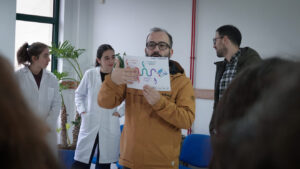
Closure of the Joint Secretariat for the end-of-year holidays
The Joint Secretariat will be closed from Wednesday 24 December 2025 to Thursday 1 January 2026 inclusive. We will resume normal operations on Friday 2

The Joint Secretariat will be closed from Wednesday 24 December 2025 to Thursday 1 January 2026 inclusive. We will resume normal operations on Friday 2

Meet Melo Mariana Vasquez, selected in the second call with his project CeroZero. Tell us briefly about yourself and your background! I am a psychologist

Conoce a Mariana Vasquez, seleccionada en la segunda convocatoria con su proyecto CeroZero. ¡Háblanos de ti y de tu trayectoria! Soy psicóloga e investigadora aplicado,

The meeting, part of the European Ultreia-Sudoe project, brought together institutional representatives and public and private stakeholders connected to the Camino. This first session opens

El encuentro, enmarcado en el proyecto europeo Ultreia-Sudoe, congregó a representantes institucionales y agentes públicos y privados relacionados con el Camino. Con esta primera sesión

La Asociación de Municipios del Camino de Santiago (AMCS) ha presentado la Estrategia Transnacional de los Caminos de Santiago de Europa Suroccidental. Uno de los

The Association of Municipalities of the Camino de Santiago (AMCS) has presented the Transnational Strategy for the Caminos de Santiago of Southwestern Europe—one of the

Within the context of the Science and Technology Week and as part of the activities associated with the European RePo-SUDOE project, students and teachers from
El muestreo de agua para análisis continuará en noviembre de 2025. el protocolo en foto !
Los miembros del consorcio se reunieron del 25 al 27 de noviembre de 2027 en Extremadura, en los balnearios de El Raposo. Tres días de